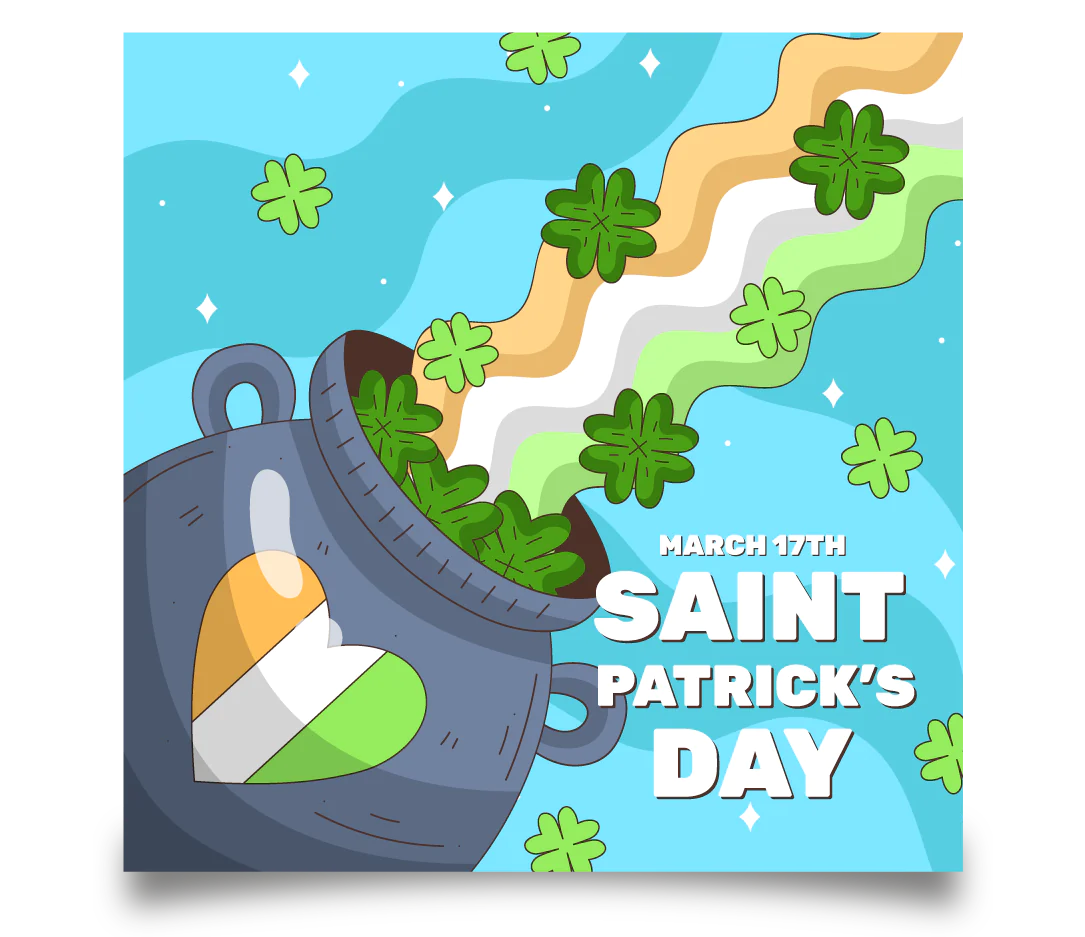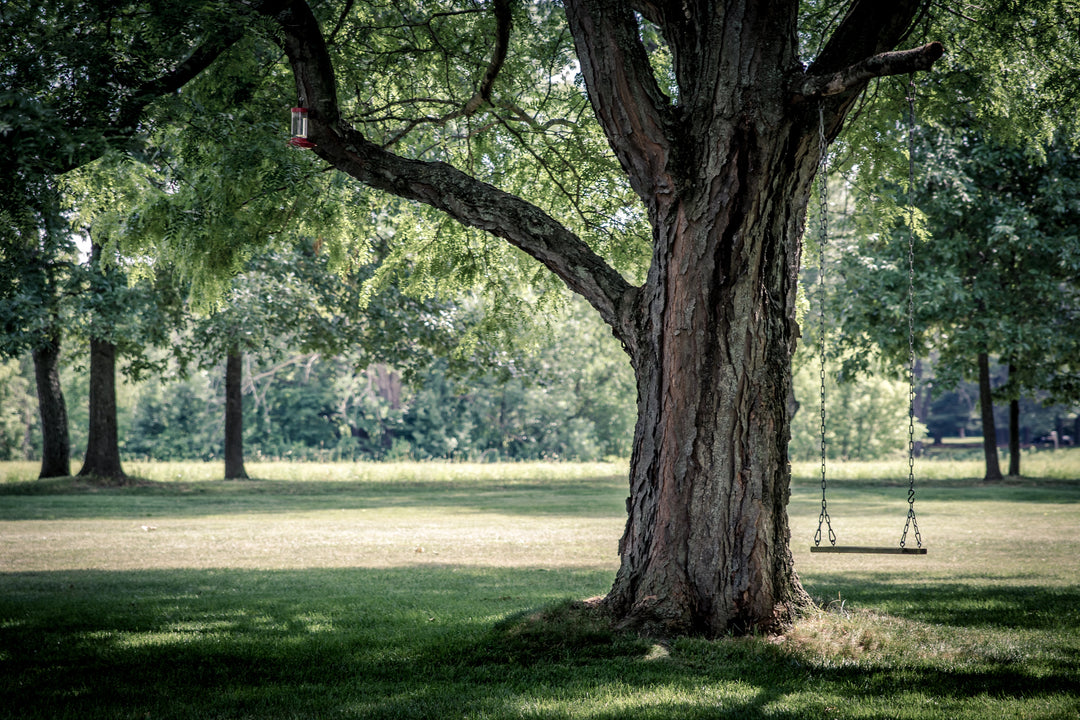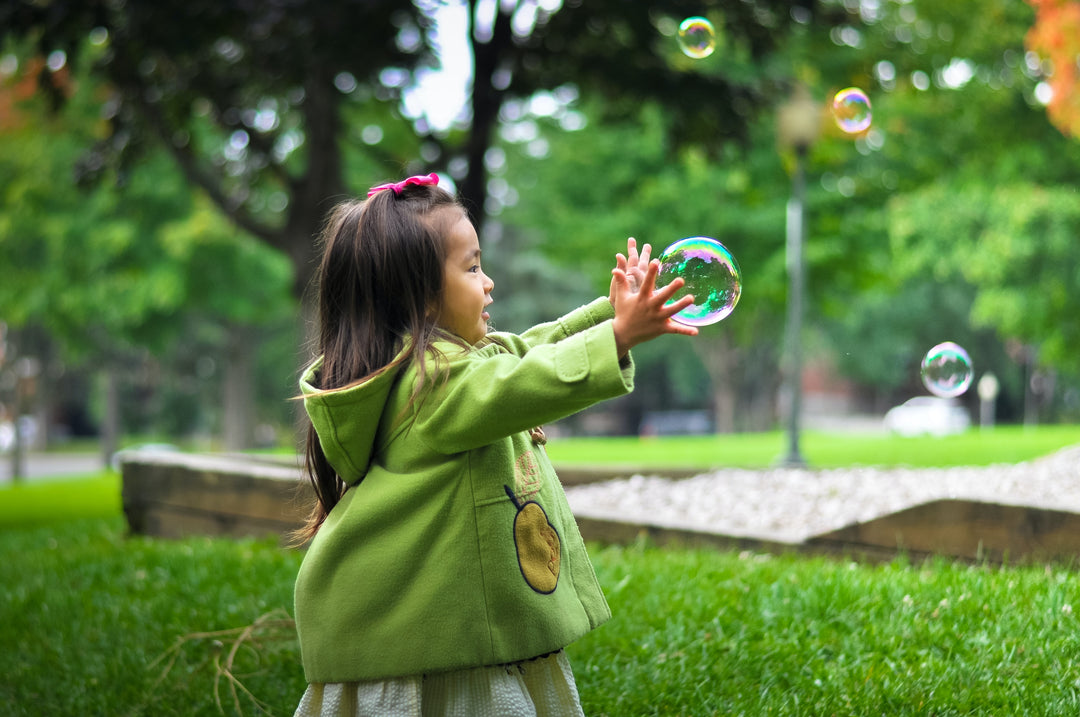St. Patrick's Day and Its Traditions

Let’s begin with the man himself, St. Patrick! Did you know that St. Patrick wasn’t even originally from Ireland? The island's patron saint actually originated from the British Isles in the 5th century. I don’t think it matters, though; the home you choose is way more noteworthy than the home you’re born into, right? It gets even crazier when you learn how he first arrived in his chosen home. When he was 16, he was kidnapped and shipped to Ireland as an enslaved person.
He did manage to escape to his native home only to travel back to Ireland some years later after he was inspired to return as a Christian missionary to the previously pagan land. He’s credited with introducing Christianity and driving snakes out of Ireland; even though there’s some speculation around whether his life is more fiction than fact, I can safely say that St. Patrick is a symbol of Irish culture. St. Patrick’s Day isn’t only a celebration for the man, but a celebration for Ireland!

Why do we celebrate on March 17th?
We are not sure when he was born, but it’s believed that he died on March 17th, 461. So, St. Patrick’s Day is a party around the anniversary of his death…it almost seems like they didn’t like him that much. Celebrate a person’s birth? Yay! Happy Birthday! Celebrate a person’s death? Feels a little macabre. This reaction makes a lot more sense when you understand how it was first recognized; St. Patrick’s Day was first celebrated in Ireland in the 9th or 10th century as a solemn religious holiday. Once the holiday made its way to America, it evolved into the party we recognize today.
Why parades?

Surprisingly, the first St. Patty’s parade took place in America. With the influx of Irish immigrants in the 1700s, the displaced population became homesick. Instead of observing the Irish holiday as a quiet affair, as they would back home, it became a bright celebration of their heritage! From then on, St. Patrick’s Day became a happy event and a show of Irish strength with annual parades in Boston, New York City, and other American cities.
Why green?
The bare minimum for celebrating St. Patrick’s Day is wearing green, but why? Why is green so significant for the holiday? Well, there isn’t one clear answer. Like most old legends and traditions, the reason “why?” varies from person to person. Here are some of the more significant answers for why we wear green:
+ For Ireland’s nickname: The Emerald Isle

Ireland earned the title “The Emerald Isle” because of its abundance of natural greenery. Ireland’s staple weather feature is rain. The temperature may change, but precipitation is a constant. Summer? Warm and wet. Winter? Cold and still wet. As you can imagine, this lends its hand to the island’s beautiful green rolling hills or, as Johnny Cash would say, its 40 shades of green.
+ For the Irish flag
The Irish flag has three vertical stripes: orange, white, and GREEN. The symbolism behind the design is actually super interesting. The green represents the Catholics, the orange represents the Protestants, and the white between the two colors symbolizes the peace between the two religions in Ireland. Even though this proposed reason for the green on St. Patrick’s Day is delightful, I wonder why orange doesn’t have the same love? For this reason, I doubt this is the answer to why we wear green.
+ For the shamrock
I think this is the most substantial reason why we wear green. The shamrock (three-leaf clover) has become synonymous with St. Patrick’s Day and Ireland. St. Patrick is believed to be the one to bring Christianity to the island and used the shamrock to explain the idea of the Godhead (God, Jesus Christ, The Holy Ghost). Whether or not this took place, the event to solidify the shamrock as a symbol of Ireland is powerful…rebellion.
+ It could’ve been blue
The color most associated with St. Patrick used to be sky blue or “St. Patrick’s Blue.” Early depictions of the man would show him wearing this blue which became the color of the Order of St. Patrick (a part of Ireland chivalry). In even earlier mythology, the symbol of Irish power was a woman in a blue dress. When Henry VIII took the throne and declared Ireland part of England, blue became the official color. As you might assume, the people of Ireland weren’t that enthusiastic about this new arrangement; they used St. Patrick’s shamrock as a sign of rebellion and Irish independence. Isn’t that awesome? This, in turn, made green the color to represent Irish culture. Again, isn’t that awesome?!
(Don’t worry; I look best in cool colors. So whether it was blue or green, I would’ve looked fantastic. I knew that was keeping you up at night.)
What’s with the pinching?
Do you remember when you were little and didn’t wear green on March 17th? Everywhere you turn, pinch, pinch, Pinch! Hopefully, it’s less common today than it was a couple of decades ago; but knowing how kids operate, pinching is probably still alive and well.
Why do they pinch, though? Easy, leprechauns. The leprechaun is a figure in Irish and Celtic folklore and is believed to be a fairy type. According to myth, leprechauns are incredibly cranky and mischievous. (Honestly, I would be a little cranky too if I was responsible for mending the shoes of the other fairies all-day. Don’t they fly? Why do they need shoes?) They enjoy pulling pranks and…PINCHING! The reason to wear green to avoid their pinches does vary. Some say it’s because the holiday’s signature color makes you invisible to their spritely fingers and others say green is their favorite color and pinch anyone not wearing it.
Either way, wear green and keep your fingers to yourself!









![10-Year Old's Birthday Ideas [You Can Do at Home]](http://bolderplay.com/cdn/shop/articles/Screen_Shot_2023-08-26_at_12.36.23_AM.png?v=1693024731&width=1080)



Leave a comment